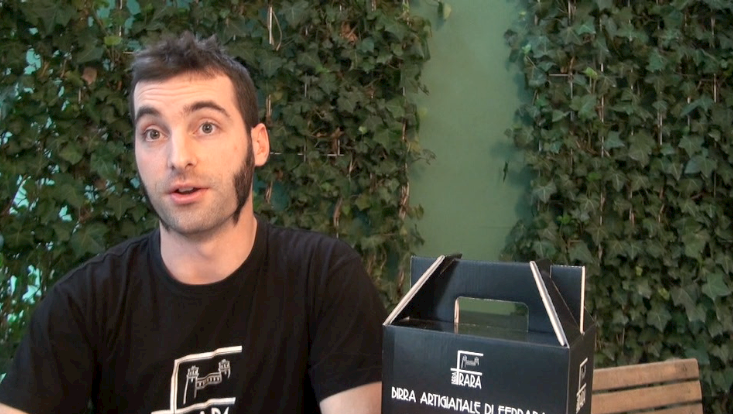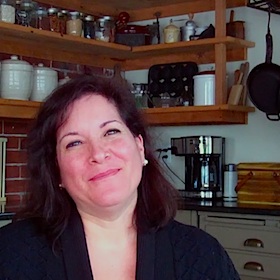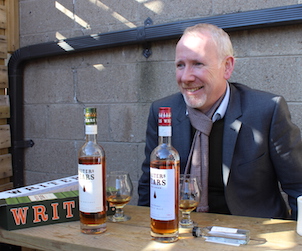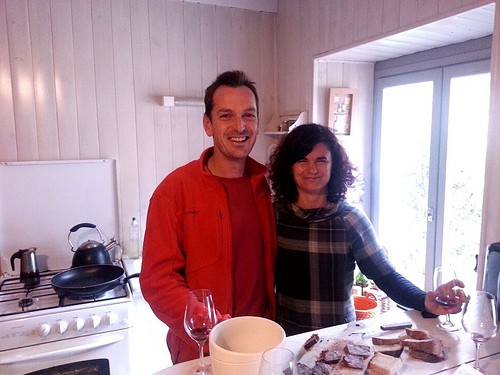by Andy Shay
Has anybody noticed, or is it just me, that hot cheese is getting to be a hot topic here in Canada. Okay, raise your hands now, how many of you received a gift basket over the holidays with a “cheese baking dish” inside. I cannot tell you how many of them I saw in the gift basket catalogues that come stuffed inside of the newspaper in the weeks leading up to Christmas. Surely, as curious as it is, this is a sign of a wakening sense in Canadians that there is more to cheese than just eating it cold or as fondue.
Now that it has been 10 below for the past five days and the cold is starting to permeate the house and your bones, you naturally start to think of those very hearty foods that will warm from within, like stews and soup and you guessed it – hot cheese.
But what do we know about hot cheese? Well there is fondue – it can be lovely, but our parents generation figured out how much work it is (they all received at least two fondue sets as wedding gifts). First there is the grating and the cooking (you can buy one of those prepared pouches, but let’s face it – it is just not the same), the bread slicing and toasting, fiddling with the sterno – lots of fun dipping – and then there is cleaning the pot. Surely there must be other options! In fact, there are quite a few.
As is often the case with cheese, we look to our European cousins and our domestic food mavens, the Quebecers, for inspiration. On a quick survey there is Raclette, Haloumi style, baked, fried, melted and the distinctly Quebec version of “fondue”: grated cheese, bound with cream and rolled in bread crumbs and then deep fried. Over the next few weeks I’ll explore some of these at GFR.
Right now, let’s take a look at Raclette. What could be easier and more delicious than a Raclette dinner party. Raclette is an action, a cheese and
machine to serve the cheese. Raclette is a washed rind cheese from the Alpine region of France and Switzerland and its name is derived from the scraping action used to serve it. It is one of my favourite cheeses cold, but it was not until a few years ago that I had my first hot Raclette experience that I learned how delicious it is hot.
I was in the mountain town of Annecy and went to restaurant Le Freti that specialized in Raclette. Not knowing what to do, I followed the two native men at the table next to me. Here is what happens: the Raclette machine is brought to the table and the cheese is mounted in it.
Next, the accompaniments arrive. Saucisson, pickled onions and cornichon, jambon de montagne (like prosciutto) and steamed baby potatoes. That is it. You start to heat the cheese and as it melts, you use a knife and scrape off the melted part and drop it on the accompaniments. Oh, it is so good. It is stinky, the flavour is sharp but woody and it is the perfect foil for the paired foods.
How to set it up? Really, this is the best part because all you do is set up the machine, the cheese, the charcuterie platter and boil potatoes. Your guests serve themselves! Plus, there is no stuck-on mess to clean up later (although you may want to air out your house). That is it!
How much to buy? The two gentlemen next to me in Annecy finished off a half wheel of cheese (about 1.5 kg) but I am thinking that is a bit heavy for North American sensibilities. I would suggest 200-250g per person.
What about the machine? There are two styles available. There is the traditional style like in the picture at the beginning of this article or a more
consumer friendly grill type version. The advantage of the grills is that they can cook other foods in addition to the cheese, making for a more balanced meal and perhaps being more inclusive to more varied diets. The cheese is sliced thinly and placed on the grill to heat. The grills are available in cooking equipment stores and cheese shops in the $80-110 range. At About Cheese in Toronto we’re renting
both the traditional and grill style machines for $10/night or free when you purchase a half wheel of Raclette.
Charcuterie ideas? Fortunately for us, charcuterie is also hot and there are a burgeoning number of artisan charcuterie producers near the city. Be sure to ask at your local specialty deli or butcher. Interesting examples can be found at butchers Cumbrae, Olliffe or The Healthy Butcher or gourmet shops like Shefflers, Petite Thuet, and The Cheese Boutique.
What about the cheese? There are plenty of French and Swiss Raclettes out there both pasteurized and raw milk. They are available in plain or with peppercorns inside for a bit of a bite. As you might have guessed, the Quebecers have long embraced the idea of Raclette and there are several very interesting Canadian raclettes available. Look for examples from Fromagerie Champetre, Fromagerie Fritz Kaiser and
Fromage Cote.
Warm your nights this week with easy entertaining, friends, great foods and hot cheese.
Andy Shay is a director of the Ontario Cheese Society, teaches at George Brown College and develops special projects for Provincial Fine Foods including AboutCheese.ca.








